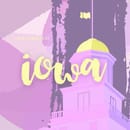As someone who has a passion for writing, I always wanted to start my own blog. But there were two roadblocks that initially stopped me from doing so: motivation and how to even start one. Plus, not to mention, the oversaturated market of blogs and bloggers out there on the web intimated me.
It wasn’t until I joined the Applied Digital and Social Media class (a course at the University of Iowa that requires students to create and maintain a blog) when I finally decided to give my mini dream a chance and face my fears in finally launching my own blog: The Conscious Collegiate. My blog is dedicated to awaken and empower college women through the exploration and explanation of topics and practices in holistic health and wellness that center around uplifting the mind, body and spirit.
The roadblocks I initially faced soon became runways because, through this course, I found the motivation and information that I needed to start blogging. Here are some helpful tips for you to start your own blog that I felt were valuable in starting mine!
1. Define Your Niche
It is essential to establish a niche for your blog so that it gives you a sense of purpose and direction for the type of content that you create and publish. It should be something that you are passionate about and that you have some degree of knowledge or expertise in. If you don’t have a passion or interest in your niche, it will be difficult to maintain and come up with new content to publish on your blog. Plus- the point of blogging should be exciting and something you want to do, not dreadful or seen as a chore.
Niche examples: food, fashion, music, travel, lifestyle, interior design, wellness, sports etc.
2. Know Your Audience
Like any type of writing, knowing your audience will determine the tone and voice in which you write in. Establishing and narrowing down your audience will be beneficial not only the way you write your posts in, but the type of content you write about.
For example, my blog is on holistic health and wellness for college age women, so I am not going to write a post on the 5 Best Essential Oils for Pregnant Women! It needs to be tailored in a way that is relevant to your audience and is written in a way that your audience understands.
3. Create a Content Guide
To help you strategically define your blog’s niche, plan out a content style guide. This will contain the name of your blog, the purpose of it and the target audience, as well as the tone and voice you will consistently integrate in all of your posts.
Also, think of interesting and engaging pages, categories and themed post types that are relative to your niche that you think your audience will enjoy! One thing to consider is the “About” page, a page that is important for your audience to understand who is behind the blog and the purpose/mission of it.
4. Establish Your Blog’s Branding
When first-time readers come to your blog, first impressions matter! Before launching your blog, make sure to create a brand manual that establishes your blog’s web design theme/lay out, logo and header image, color scheme, font style and image quality. When thinking of branding, make sure it is purposeful and represents your niche. For example, my blog’s branding has soothing colors, simple fonts and a lotus logo to convey my niche of holistic health and wellness.
Below are helpful resources that I used (except SqaureSpace/Wix) and found helpful for my blog to help you get started:
Popular web development resources to create your blog:
Free resource for creating a logo/header image/graphics:
Free resource for color scheme:
Free resources for stock images:
5. Get on Social
What’s the use of putting your blood, sweat and tears into a blog that no one reads? Sure, your family and friends will be your #1 fans, but to keep you motivated you’ll want to grow your following. To help build your audience and drive traffic to your blog, it is advantageous to be on social media, since that is where your audience is and engages in content the most.
Since your time is valuable, I would advise choosing one or two social media accounts to start that are best for your niche and the ones your targeted audience mainly uses. Do you plan on taking a lot of pictures for your blog’s content, i.e. a fashion or food blog? Then choose Instagram or Pinterest! Do you plan on pushing your content by interacting with other bloggers, reporters, experts in your niche, i.e. a music or movie review blog? Then my go-to would be Twitter! When making and maintaining your blog’s social accounts, be sure that the branding (logo/header image) and tone/voice (captions/hashtags) is cohesive with your blog!
Once you have established your blog’s social media accounts, make sure to not only “follow” and engage with your family and friends, but also other bloggers, experts and reporters in your niche too. It is crucial that all of your social media posts have a “call to action” to direct your audience back to the blog itself to better achieve your goal of building an audience and boosting traffic.
With the help of these tips, I have had a positive experience in launching and maintaining my blog. Although it comes with its challenges, it has been a rewarding experience and I plan on continuing with it beyond the course that inspired and helped me get started. I hope that whatever fears you had about blogging are now used as fuel to launch your own with these tips in mind!
Check out my blog here and follow on Twitter @TheConsciousCo3.
Image Credit: 1


